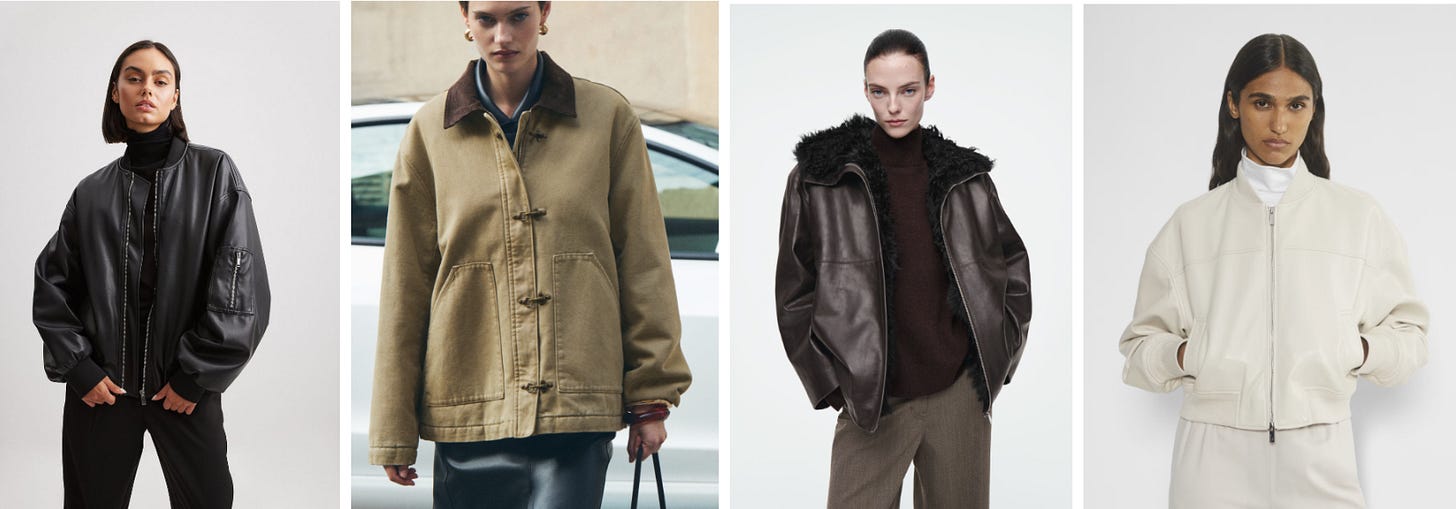Keeping up with fashion this year has felt like watching a comedy drama: so many twists and turns yet no one really knows what the end goal is. The designer switcharoos were fodder for internet memes and TikTok commentary but with some major announcements made (Matthieu Blazy takes the crown), we can finally start to imagine luxury’s future.
We watched the industry stumble spectacularly with consumers pulling back on LVMH and Kering, and I suspect the investigations into Dior and Loro Piana’s supply chain played a role in this outcome. But consumer memory is short so I’m not naive enough to think this slowdown will last much longer. I would just really like to see Maximilian Davis win at Ferragamo! Elsewhere, Phoebe Philo launched her namesake label to great fanfare and mixed results but if this counts as a win, she’s released enough material to fill every quiet luxury brand’s mood board for a decade.
Meanwhile in the U.S., all eyes are on GAP since it appointed capital-F fashion designer Zac Posen. Other mass-market brands have also made a major comeback including J.Crew, Abercrombie & Fitch and to some extent, Banana Republic. They’ve all been leaning into ‘90s nostalgia and the collective craving for “simpler” American times to appeal to Gen Z, but their revival will be a lot more convincing if the product quality matches the level of storytelling.
We’re also keeping up with how Claire Wright Keller changes Uniqlo, as well as following Calvin Klein in its next chapter which will involve a return to the runway with Veronica Leoni in charge. Last but not least, and perhaps most interestingly, designers of color won big in 2024. Willy Chavarria and Diotima’s Rachel Scott took home the top CFDA Awards (American Menswear and American Womenswear Designer of the Year respectively) which marks a turning point in American fashion history. It’s exciting to watch this space.
I love speculating on the future of the industry so I’ve shared my top predictions (aka trend observations) below:
Fashion embraces Substack
In 2025, more people will be shopping via Substack. With the top fashion newsletters reporting millions in combined affiliate revenue, there is clearly an untapped market for personalized shopping recommendations that aren’t mediated by algorithms or advertisers, and brands are paying attention. We’ve already seen a growing number of them advertising on Substack (some are even starting their own) so we can expect more marketing dollars to be allocated there.
More broadly, the industry is also following the independent voices (from podcasters to fashion theorists) rising out of alternative media networks including Patreon, YouTube and TikTok. Just look at the brands hiring TikTokers to conduct street-style interviews for their social channels or the outlets quoting and/or assigning stories to writers who aren’t formally trained in the space (in fact, I believe my reporting on samples sales helped me land my first Wall Street Journal byline).
If the industry actively embraces (and appropriately funds) diverse perspectives in the process, this shift can help restore the quality and depth that are sorely missing in today’s journalism.
The luxury-fication of fast fashion
In 2024, fast fashion became aspirational.
One of the most notable cultural shifts contributing to this is the widespread adoption of dupe culture. It has turned duping into a competitive sport; people no longer felt embarrassed to admit that they’ve duped a designer item. In fact, media outlets and influencers have made a business out of sharing links to dupes. This laid the groundwork for fast fashion to masquerade as luxury operating on the premise that it can match the quality of the original item. Suddenly, middle or low-income consumers who are priced out of the luxury market can turn to a myriad of brands to obtain different status symbols. If there was a stigma associated with shopping at the Zaras, H&Ms and GAPs of the world, today it’s just considered smart business. The popularity of the Walmart birkin fits perfectly within this context.
Fueling this new perception is the fast-fashion adoption of the luxury marketing playbook. In many ways, Zara has always been the leader of the pack. You already know about the too-good imagery the retailer creates to distance its products from the reports of low quality. Now several of its competitors also produce high-fashion e-commerce shoots no doubt inspired by The Row and Phoebe Philo. Their imagery looks so similar, it’s impossible to tell a NA-KD product listing apart from Mango, COS or Aritzia.

In 2025, I predict that fast fashion—having already won over cash-strapped consumers—will earn a bigger piece of the middle market by continuing to align itself with luxury. We will also see these brands lean into exclusivity (i.e. DSW trip to Amsterdam or the lavish MESHKI holiday dinner at Hotel Chelsea) as a way of engineering product desirability and building cultural cachet. I’ll have a longer post about the luxury rebrand of fast fashion next week.
Note that this is also coinciding with growing awareness of fashion’s role in the climate crisis but divesting from overconsumption has yet to materialize in an impactful way.






